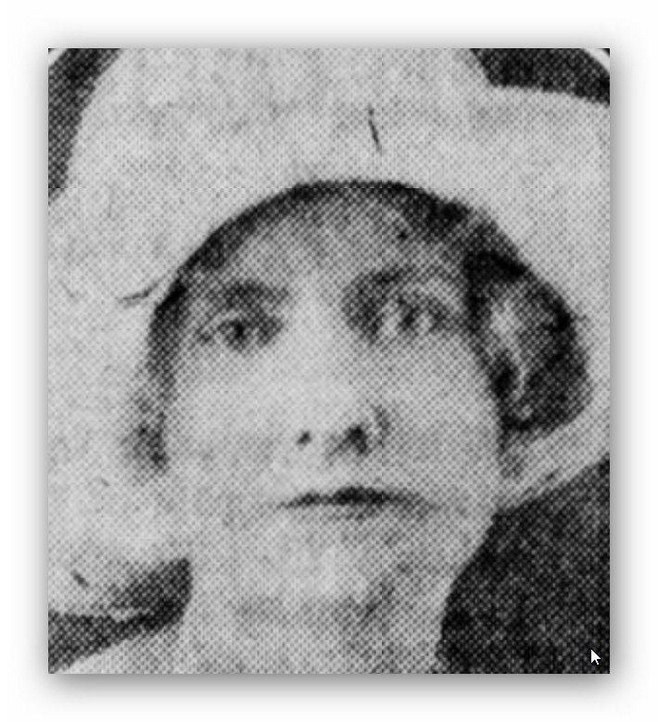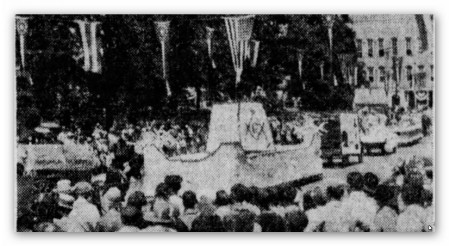Covington - History by Kate Rabb

Source: The Indianapolis Star Sun 15 Aug 1926 p 23 – by Kate Milner Rabb
The men who in 1826 laid off the little village of Covington, Ind on the bluffs of the Wabash are said to have had such faith in the rich bottom lands and the and the mineral resources of Fountain and the prospect of canals and railroads, that they soon plunged into speculation and dotted the county with little towns, many of them long forgotten. Active as were their imaginations, however, they would never have dreamed that 100 years later their descendants would engage in a celebration of the founding of the town, a celebration in which its past history was pictured and its present prosperity displayed.
To the members of the Richard Henry Lee Chapter of the DAR much credit is due, for this active chapter of 50 members planned the centennial program, helped to devise means of financing the celebration, helped to prepare the centennial book, edited by Mrs. Worth Reed, which contained the history of the county, the program and the pageant and induced Eugene Savage, the well-known artist whose home was in Fountain to design its artistic cover. A member of the chapter, Mrs. William N. White of Covington, wrote the pageant and Miss Verna Glascock of Covington was its director.
The DAR members sold the books and sold tickets in order to raise funds for the celebration. The members were divided by townships and there were appointed committee chairman who took charge of the work of the various townships and the decorations, publicity, relics, etc. With them were willing workers from every township in the county and from the other towns, including Attica, Veedersburg, Hillsboro and Newtown. It was this community work which made the celebration which made the celebration a success.
The old Courthouse, whose picturesque tower rising from its grove of trees is familiar to all travelers along the Wabash, looked down last Tuesday morning on a public square gayly decorated with flags, streamers and bunting. In all the shop windows were relic exhibits from the various townships; interesting old cooking utensils; crude old wooden farming implements; many pistols and guns; Indian relics – for this was the Shawnee country in the early days and one township perpetuated this tribe’s memory in its name; dolls, furniture, and old music instruments, one of these a dulcimer and the other a rare and beautiful seraphine.
Fountain County was long famous as the home of the LaTourettes, the French coverlet weavers, and one window showed a handsome four-poster bed, a trundle bed and day bed covered with handsome examples of the LaTourette coverlets. Here, too, was the famous loom on which the coverlets were woven and the “big wheel,” the reel, and other implements used in the preparation of the wool for the weaver.
In a window close by hung a copy of the first volume of the first county newspaper. “The People’s Friend,” Vol. 1, No 8 Jan 15, 1842 still published and called The Friend. Conspicuous is the advertisement of EA Hannegan one of the county’s illustrious lawyers of the past.
The centennial celebration began Tuesday afternoon with an old melodies concert in which more than 100 people took part. One of the most interesting features was an old-fashioned singing school, led by Prof. Livengood, who was a singing teacher many years ago. The first presentation of the pageant was given on Tuesday at the fairground. In this pageant 1,000 persons took part, representing every township in the county and in every possible case they were descendants of the original settlers of the county. The water nymphs of the Wabash were all descendants of early Wabash valley settlers, episodes, covered the history of the county, beginning with the coming of the red men, among whom was e Wabash and then came the pioneers who gave a glimpse of pioneer activities.
The picture of pioneer life, showing men and women both occupied with farm and household tasks, and the episode which showed the county fair were considered the most effective scenes in the pageant. Much pains were taken to secure accurate costumes and to depict the scenes as they really were. The greatest effort was made through the entire pageant to represent prominent characters in local history by their descendants, whenever possible and to represent men of national reputation by Fountain County citizens who most resembled them. The county has a reputation for having many talented singers and dancers and these were used in the pageant, hundreds of children taking part in the dances. A remarkable number of genuine pioneer vehicles was used in the various pageant episodes.
Wednesday morning’s centennial event was the parade featuring the historical, industrial, fraternal and club work of the county, prizes being offered for the best float presented by each of these classes of organizations. This parade was led by the oldest band in the county, the Newtown band organized in 1846. Following this was the DAR car with the regent, Mrs. CW Dice of Covington and the beautifully decorated float in which rode the centennial queen, Miss Delores Kerr of Troy Township and her attendants. Miss Kerr was chosen from a group of 11 women from the townships of the county.
Conspicuous in the procession was the centennial cake, made of 165 cakes baked in the county and iced together into a giant cake adorned with 100 candles. This cake was cut at the fairgrounds in the afternoon by the queen and distributed among the people. Conspicuous among the historic floats was a beautiful canal boat gayly painted, in which rode men and women in quaint costumes of the 40s. This was Attica’s contribution. Other historic subjects were an old wooden mill wheel turning in real water and sawing wood, one of the first in use in this county; old log cabins, with clapboards on the roof and coonskins at the side of the door; old schoolrooms and old vehicles.
The oldest vehicle was a wagon, which was made by Jacob Yerkes and Jacob Rodes in 1834, and in which they rode to Fountain County in 1839. Few counties in the state can claim so old and so unique a relic of pioneer days.
The judges of the parade, CP Madden, mayor Danville, Ill; John S. McFadden of Rockville, Ind and George Weidele of Terre Haute, Ind awarded the prizes to the Eastern Star of Veedersburg for the best fraternal float; to Shawnee township for the best township float; to the Hixon Lumber Company of Attica for the best industrial float; to Troy Township for the best boys/girls club float; and to the Newtown Methodist Sunday School for the best school float, this float representing a tulip bed with the children as tulips. Mill Creek township received the award for the best historical float but it was found difficult to decide between the winning old mill wheel and Attica’s beautiful canal boat. Rain prevented the presentation of the pageant the second night but it will be repeated again very soon, for the benefit of those who failed to see it the first evening.
Enormous crowds from Fountain and neighboring counties filled the town Tuesday and Wednesday. The historical agencies of Fountain County agree that this celebration demonstrates that such a celebration does more than any other agency to bring together the people of the various communities, to give them a common interest to stimulate interest in local history and to encourage patriotism.




